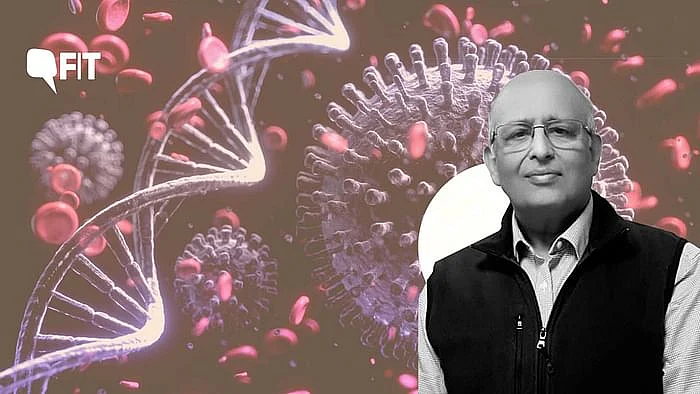
COVID-19 Mutations & Variants of Concern: All You Should Know
“The more you limit the spread of the virus, the more you limit mutations,” says virologist Dr Jameel.

advertisement
On 25 March, India saw its biggest single-day jump in total infections in almost 5 months at 53,476 new coronavirus cases. Maharashtra and Gujarat saw their highest single-day spikes since the start of the pandemic in 2020.
On 24 March, the health ministry announced that genome sequencing by the Indian SARS-CoV-2 Consortium on Genomics (INSACOG) has shown variants of concern (VOCs) and a novel ‘double mutant’ variant in India.
What does this mean and should we be worried as a second wave begins to unfurl? FIT speaks to by virologist and director of the Trivedi School of Biosciences at Ashoka University, Dr Shahid Jameel to find out more.
First, let’s break down yesterday’s news. “So far, India has done more than 1,000 viral sequences.”
The three variants of concern found are ones we have seen outside of India:
- UK variant
- South African variant
- Brazil variant
Where this gets concerning, is the double mutation found. Dr Jameel explains, “The mutation called E484Q is a novel combination that has not been seen and it has been found in 15-20 percent of cases that are being sequenced.”
Is the New Mutation Linked to the Rising Cases?
So far, “we don’t know,” says Dr Jameel. “Epidemiological correlations are ongoing to determine a link.”
The Ministry of Health and Family Welfare also added that, “Though VOCs and a new double mutant variant have been found in India, these have not been detected in numbers sufficient to either establish or direct relationship or explain the rapid increase in cases in some States.”
Still, it is important to maintain COVID protocols, add experts.
Mutations Are Natural; So When Should We Worry?
Dr Jameel explains that mutations are a natural phenomena. “Some are selected as they provide some positive effect on the virus. This is what’s happening with these mutant lineages. If the mutation was detrimental to the virus we don’t see it because it will not survive.”
The health ministry said that, “5-6 percent of mutation is normal. But when it impacts public health or results in increased transmission is when it is concerning.” Since mutations are natural, tracking and tracing becomes important and that reveals more information.
‘Double Mutation’ Explained
For example, the UK Variant has 23 mutations and different lineages. Out of these 23, 17 mutations that make a change in the protein that the virus makes. Out of these 17, 8 mutations are present in the spike protein of the virus
New Mutation From Southern India
“There is another mutation emerging from South India called N443K,” says Dr Jameel. “All of these mutations are in the region of the virus surface where antibodies bind to neutralise the virus, so it will have an effect.”
How much of an effect will depend on which mutation, or rather which combination of mutations.
'Virus Cannot Mutate Forever'
“After a while, these mutations become detrimental to the virus and this is natural in evolution. We are seeing this because there are over 11 million cases in India.”
“The pandemic will be over soon but not yet,” adds Dr Jameel.
So mask up, maintain social distance and hand hygiene to help curb the rising cases.
(This article was first published in FIT and has been republished with permission)
- Access to all paywalled content on site
- Ad-free experience across The Quint
- Early previews of our Special Projects
Published: 26 Mar 2021,07:40 AM IST